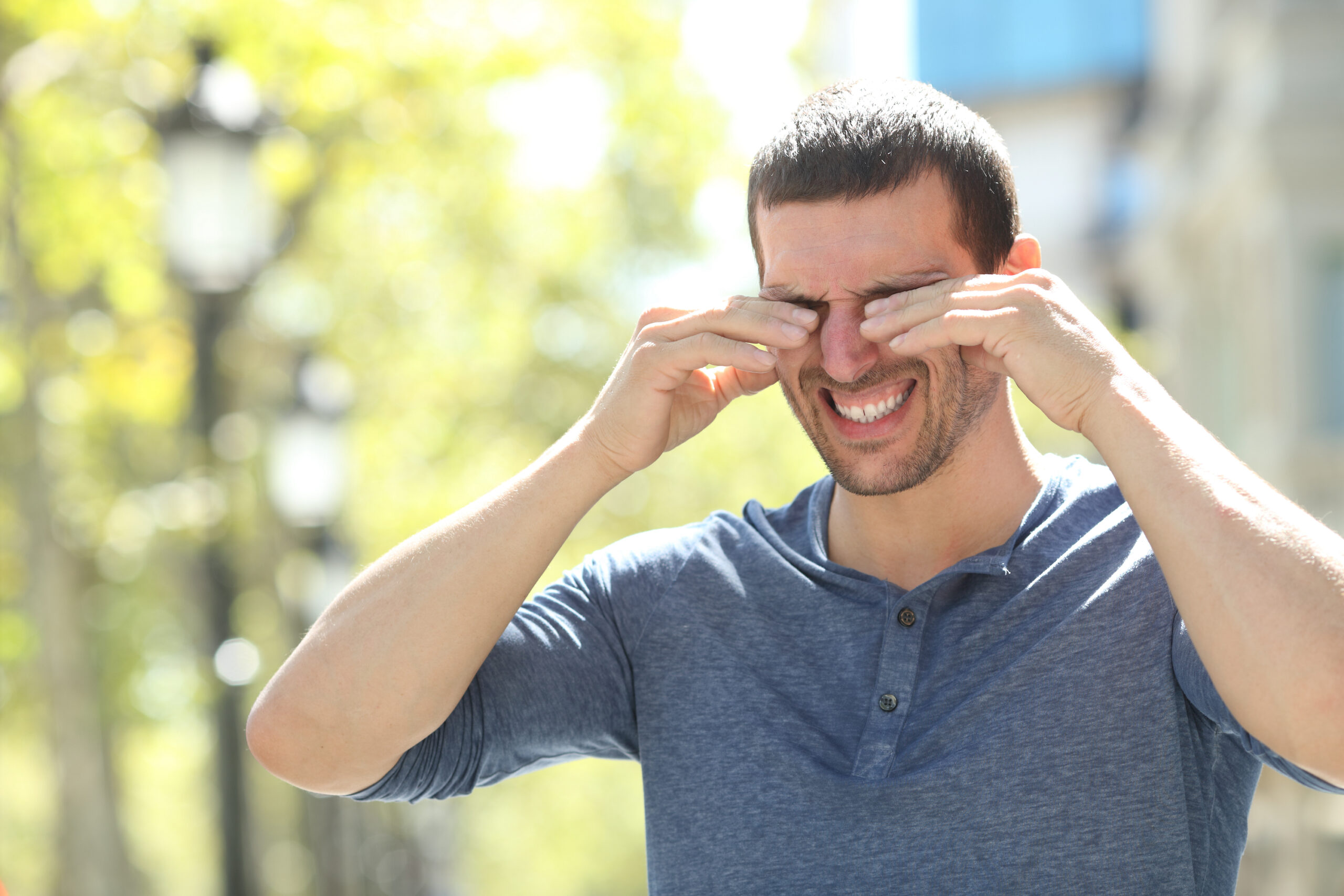You don’t have to live with burning, stinging, red, runny eyes. The experienced eye doctors at Precision Vision specialize in diagnosing and treating dry eye syndrome.
If left untreated, severe cases of dry eye can cause long-term eye problems, such as corneal damage. Professional treatment of dry eye syndrome is important to rule out more serious eye conditions that may mimic dry eye symptoms.


Dry eye syndrome, also known as dry eye disease or keratoconjunctivitis sicca, is a common eye condition characterized by a lack of sufficient moisture on the eye’s surface. Your body’s tears play a vital role in maintaining the health and comfort of your eyes by lubricating them and washing away foreign particles. When the eyes do not produce enough tears or when the tears evaporate too quickly, it can lead to dry, irritated, and uncomfortable eyes.


Dry eyes can be caused by a variety of factors including:
Understanding what is causing your dry eyes is crucial for effective treatment and management. If you believe you are experiencing dry eye syndrome, schedule an appointment with one of Precision Vision’s dry eye specialists in Oklahoma City.
In addition to the factors listed above, one of the most common underlying causes of dry eye syndrome is meibomian gland dysfunction (MGD).

Meibomian gland dysfunction (MGD) is a condition that leads to a decreased quantity and quality of the oil layer in the tear film. Meibomian glands are tiny glands in the eyelids that are responsible for producing the oily layer of tears that helps prevent rapid tear evaporation. When the meibomian glands become blocked or their oil production is compromised, it can lead to an unstable tear film and dry eye symptoms. MGD can result from factors like inflammation, bacterial overgrowth, or simply aging. Addressing MGD is often a key component of managing dry eye effectively.